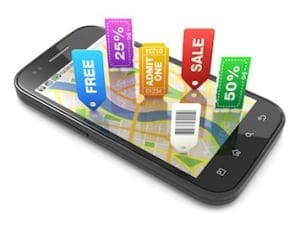Location-based intelligence data has a lot of value to direct marketers, because bringing messages to customers at the point of need is key and messages that are directly relevant to a customer’s location are a great way to deliver value, build relationships and yield results.
The overwhelming penetration of smartphones into consumers’ hands and the availability of different layers of location data has changed the game for marketers, says Bill Borelle, svp brand strategy and integrated marketing communications, Pitney Bowes, who presented on the topic of location-based intelligence at the DMA2014 conference in San Diego this week.
“Knowing what is around a person’s location is what’s valuable to marketers,” Borrelle says, adding that knowing a  consumer’s location on a map is one thing, but knowing what businesses are in that surrounding area is where the real value comes into play.
consumer’s location on a map is one thing, but knowing what businesses are in that surrounding area is where the real value comes into play.
Borrelle says research shows 74 percent of smartphone owners use location-based tech through apps, and that transparency from brands and the power to make their own choices is driving that high rate.
“When we give our customers—with full transparency—the option to choose to share their location information in exchange for better service or a price advantage the majority will say yes,” Borrelle says.
There are three primary applications for location data in marketing right now: to present hyper-targeted messages and offers to consumers based on their location; building psychographic and demographic profiles of customers; and aggregating and storing store population location data for market research and future campaigns.
Building profiles of customer based on location intelligence data provides marketers with a unique insight into customer behavior that was previously unavailable to marketing teams.
“Location data can reveal interesting habits and patterns in consumer behavior. We can create a master database of consumer behavior, all unlocked by a consumer’s location-based activities,” Borrelle says.
Creating campaigns based around technologies such as geofencing can attract consumers and provide them with value, but the location data that drives those campaigns can provide marketers with a lot of valuable information, as well.



